In nearly 40 years, one in three Quebecers will be a senior. The population is therefore aging more and more, and with this phenomenon appears an increase in cases of neurodegenerative diseases, such as Alzheimer's and Parkinson's diseases.
I will write a series of articles on neurodegenerative diseases, starting first with Parkinson's disease.
All people with Parkinson's disease say that when we have this disease, it is fulfilling to engage in meaningful activities. This makes it possible to momentarily forget about the disease, to curb the symptoms and to strengthen certain skills. Action is therefore and essential component to get better.
However, when announcing the diagnosis and sometimes even several years later, it is important not to neglect the psychological aspect associated with such a condition. For example, we may find it unfair, ask ourselves ''why me?'' or ''what did I do to deserve this?'' It is by doing in-depth work on ourselves, by talking openly about our illness, but not only, that we can accept what happens to us.
Acceptance takes time and the greatest gift a person with Parkinson's disease can give themselves is to learn to love themselves unequivocally for who they are and not what they do.
Biological mechanisms
In the brain, there are billions of nerve cells (neurons) connected into neural circuits. When a movement is made or a thought is produced, neurons exchange chemical messengers called neurotransmitters with each other.
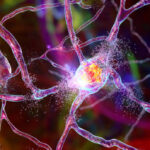
In Parkinson's disease, there is a disorder of a neurotransmitter called dopamine. In fact, there is a dopamine deficiency in certain brain structures. It should also be noted that brain alterations do not only concern dopamine but also other neurotransmitters (e.g. serotonin, glutamate, etc.).
Thus, several brain structures are affected during the disease, which causes olfaction and sleep disorders. Then, structures involved in motor regulation (substantia nigra) will be affected and cause the motor symptoms of the disease. Finally, after several years of evolution, cortical structures can be affected.
Some statistics
Every day in Canada, 25 people are diagnosed with Parkinson's disease. These people have to deal with a new reality that can take them away from their dreams and life goals. The burden of the disease is significant, with the number of Canadians living with this disease expected to exceed 160 000 by 2031.
It has also been noted that the incidence of the disease increases with age. Of all the people diagnosed with this disease, 85% are over 65 years of age.
In terms of sex, men are 1.5 times more affected than women by Parkinson's disease, but the progression of the disease is generally faster for the latter. These differences between men and women are thought to be due to hormones.
What does this disease look like ?
Parkinson's disease has several symptoms, which differ from one person to another. First, there are motor symptoms, namely tremors, rigidity, slowness of movement, loss of balance, freezing (blocking of the legs while walking), dysphagia (feeling of discomfort when swallowing) and muscle cramps.
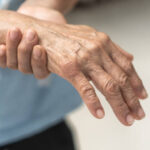
Second, there are non-motor symptoms, including depression, anxiety, cognitive impairment, loss of smell, constipation, dementia and fatigue. Non-motor symptoms may appear long before motor symptoms. They can be difficult to recognize and people who suffer from them do not realize that they are related to Parkinson's disease.
Parkinson's disease is a chronic and progressive disease. Symptoms gradually set in and then become more and more severe. The evolution of the disease is unique to each person. This is why it is difficult to predict the speed of progress.
Causes of Parkinson's disease
The precise causes of Parkinson's disease are unknown. In recent years, researchers have shown that the development of the disease is multifactorial. Genetics, environment, aging and other factors interact together to cause Parkinson's disease.
Genetic mutations have been identified in people living with Parkinson's disease. These mutations do not systematically cause the disease but increase the risk ot its occurence. At the hereditary level, the vast majority of Parkinson's cases are not transmissible from parents to their children.
Exposure to certain toxins in the environment is likely to contribute to the development of Parkinson's disease. The main environmental factors involved in the disease are: certain pesticides, manganese, carbon monoxide, carbon disulphide and some heavy metals. Exposure to these factors is often occupational, as pesticides are in the case of farmers.

On the other hand, advanced age, having white skin, being a man and living in a rural area are factors that increase the risk of developing the disease. Certain types of profesionals, such as farmers or factory workers, may be more exposed to certain chemicals or toxins that increase the risk of developing the disease. In addition, different types of serious head and brain injuries, such as concussions, increase the risk of developing the disease.
Treatments
Currently, there are a variety of treatment options for Parkinson's disease: oral medications, transdermal system (patch), intestinal gel, deep brain stimulation and alternative treatments.
Drug treament is the most commonly used for Parkinson's disease. The choice of drugs is vast. Oral medications are effective at the beginning of treatment, but a transdermal system (patch) may also be used, which delivers the medication through the skin.
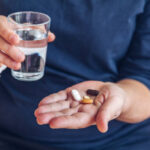
At a later stage of the disease, motor symptoms may be disabling and can no longer be controlled with oral medications or patches. This is where other treatment options come into play, such as an injectable medication or treatments that require intervention.
Intestinal gel is an example of treament requiring intervention. A gel is pumped continuously throughout the day, until bedtime, directly into the small intestine by the means of a catheter.
As for deep brain stimulation, electrodes are implanted in certain areas of the brain and are connected by wires to a device implanted under the skin in the upper chest. The electrodes produce electrical impulses that help regulate abnormal impulses.
Treatment for Parkinson's disease may include alternative therapies to standard treatment. Here are some examples: physiotherapy, speech therapy, cognitive exercices, massage therapy, etc.
What helps to get better
Despite treatments, people with Parkinson's disease have to deal with functional limitations on a daily basis. However, these are easier to manage when the person has a positive mental attitude and is resilient.
Other factors are strengths to find a fulfilling life despite the disease: physical exercice, engagement in meaningful activities, maintaining intimacy in the couple and having a good partner, not isolating oneself and belonging to a community.
Have a positive mental attitude
Having a positive mental attitude helps you feel better. It's about being able to recognize a bigger picture (both negative and positive), while choosing to focus on the positive and keep moving forward.
For example, a person with Parkinson's realizes that they are anxious, don't sleep well, and have difficulty walking. Nevertheless, she is able to indulge in tai chi sessions and she has the unwavering support of her partner.
She then decides to focus on the positive, focusing on what she accomplishes and her social environment, and not defining herself according to the disease, but rather according to her values and goals. She also recognizes the importance of doing things the way she can, not the way she wants. She chooses to be kind to herself.
Be resilient
Showing resilience in the face of Parkinson's disease is a psychic talent that allows you to bounce back and transform into a more fulfilled state. Resilience involves recognizing the disease and overcoming it without fleeing it (flight is more instinctive and leads to moving away from the anxiety-provoking situation).
In resilience, there is courage, transcendence, depth. It is not success at all costs (as advocated by the performance society) nor is it the fact of opposing or resisting the disease.

The resilient person knows that they will not come back exactly as before. As Boris Cyrulnik says, she faces adversity and tries to reborn despite the disease. But resilience is not just an ability or abilities that we have deep inside us; it is a social force. The resilient person often benefits from resilience tutors who will support him/her in his/her development process.
Physical exercice
Without going overboard, getting enough exercice can delay the progression of Parkinson's disease. Physical activity helps to work on flexibility, balance and prevent falls. It promotes the development of connections between neurons, in addition to improving social ties and the quality of life of the affected person. Endurance, muscle strengthening, balance and flexibility activities are particularly indicated.
Not to mention that dance allows you to work all at once. Moreover, Dance Movement Therapy (DMT) is a specific rehabilitation method that was inspired by dance. This method does not repeat the movements of classical dance, but allows the person to express himself\herself through this activity and to refocus his/her attention on his/her motor skills.
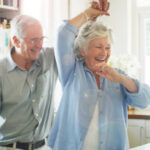
Engagement in meaningful activities
Meaningful activities are activities that have meaning for the person, in a given socio-cultural context. When the disease occurs, engaging in meaningful activities is important because it allows you to value yourself, feel useful and reinvent yourself.
There are many meaningful activities and can include participating in a dance group (e.g. Parkinson's in motion), listening to music, reading about your disease and more.
Maintain intimacy in the couple and have a good partner
Physical and emotional intimacy are universal needs. We all need to love and be loved, to touch and be touched, and to have loving and empathetic relationships.
Parkinson's disease can lead to changes in couple dynamics and sexuality: communication difficulties, self-esteem, tremors, rigidity, decreased sexual desire, etc.
But it is possible to maintain intimacy in the couple by talking openly about sexuality, being patient, distinguishing between intimate and sexual activities and focusing on pleasure and not performance.
On the other hand, having a good partner helps the person with Parkinson's get better. This means that the partner accepts that the relationship will not be exactly as before. He helps the sick person to overcome the disease and accompanies him/her in his/her moments of discouragement.

Do not isolate yourself and belong to a community
To get better, the person with Parkinson's benefits from not being alone, joining groups in the community and finding ways to expand their social network. But how do you expand your social network ? First of all, say yes when we offer you an outing and be yourself a force of proposal. Then, getting involved in associative life or in a volunteer activity is a good way to develop your friendly network. It is also important to relaunch your network as soon as the opportunity arises. Finally, the person with Parkinson's should make a small schedule to find time to devote to friends.
In terms of organizations in the community, mention should be made of Parkinson Quebec, which offers the information and support services needed to support people affected by Parkinson's disease. The organization offers a variety of services, such as an information line, exercice groups, conferences, support groups, etc. This is a community in its own right !
In conclusion
Parkinson's disease is a significant burden on our society. Characterized by a deregulation of the dopaminergic system, this chronic and progressive disease has motor and non-motor symptoms that differ from one person to another. The causes of the disease are unknown, but it is nevertheless known that its development is multifactorial.
In addition to the various treatment options, adopting a positive mental attitude, engaging in activities that value us, having a supportive partner, and belonging to a community help the person with Parkinson's disease get better. Physical activity can delay the progression of the disease and especially dance, which allows all motor skills to be worked at once.
That's it, I hope this article will help you better understand Parkinson's disease, whether you are directly affected by this condition, or it concerns a loved one.
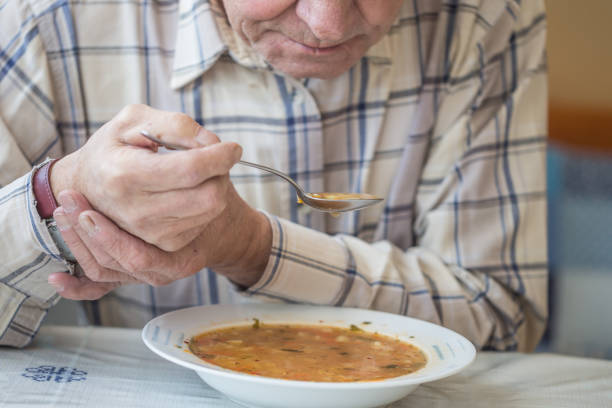
Je suis allée voir un spectacle l’année passée qui parlait justement de la maladie de Parkinston au Pavillon des Sciences de l’Uqam avec un ami qui souffre de cette maladie. Voici un résumé du spectacle multidisciplinaire :
« Je suis Anne. J’ai 30-50-70 ans ? Qu’importe. J’ai la maladie de Parkinson.
J’ai l’impression qu’un animal a étiré ses bras dans mes bras, ses jambes dans mes jambes. Bienvenue dans ma vie en déséquilibre : les premiers symptômes, le diagnostic chez le médecin, la maladresse au quotidien, mais aussi la douceur de l’entraide et l’apaisement de la musique. Installez-vous inconfortablement comme si vous étiez moi. Mêlant théâtre, danse, musique et arts du cirque, ce spectacle riche en émotions a été cocréé par des chercheurs en neurosciences, des personnes vivant avec la maladie de Parkinson, et des artistes dans le cadre du projet Piece of Mind.
*Le titre de la soirée est tiré du poème Sur le fil, de Lili Saint-Laurent.